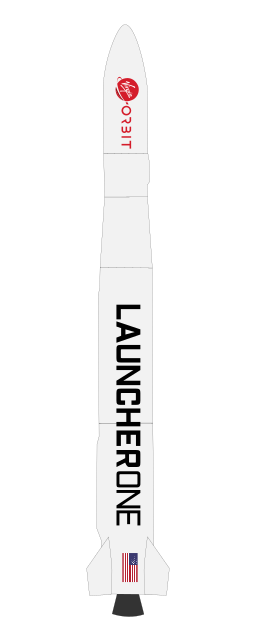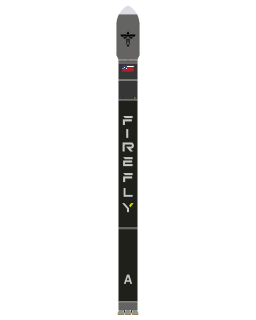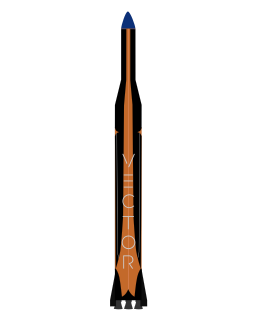Energia was a super-heavy lift launch vehicle. It was designed by NPO Energia of Soviet Union for a variety of payloads including the Buran spacecraft. Control system main developer enterprise was the Khartron NPO "Electropribor". The Energia used four strap-on boosters each powered by a four-chamber RD-170 engine burning kerosene/LOX, and a central core stage with four single-chamber RD-0120 (11D122) engines fueled by liquid hydrogen/LOX.

The Polar Satellite Launch Vehicle (PSLV) is an expendable medium-lift launch vehicle designed and operated by the Indian Space Research Organisation (ISRO). It was developed to allow India to launch its Indian Remote Sensing (IRS) satellites into sun-synchronous orbits, a service that was, until the advent of the PSLV in 1993, commercially available only from Russia. PSLV can also launch small size satellites into Geostationary Transfer Orbit (GTO).

The Saturn IB was an American launch vehicle commissioned by the National Aeronautics and Space Administration (NASA) for the Apollo program. It replaced the S-IV second stage of the Saturn I with the much more powerful S-IVB, able to launch a partially fueled Apollo command and service module (CSM) or a fully fueled Apollo Lunar Module (LM) into low Earth orbit for early flight tests before the larger Saturn V needed for lunar flight was ready.

The Falcon 1 was an expendable launch system privately developed and manufactured by SpaceX during 2006–2009. On 28 September 2008, Falcon 1 became the first privately-developed liquid-fuel launch vehicle to go into orbit around the Earth.

A small satellite, miniaturized satellite, or smallsat is a satellite of low mass and size, usually under 500 kg (1,100 lb). While all such satellites can be referred to as "small", different classifications are used to categorize them based on mass. Satellites can be built small to reduce the large economic cost of launch vehicles and the costs associated with construction. Miniature satellites, especially in large numbers, may be more useful than fewer, larger ones for some purposes – for example, gathering of scientific data and radio relay. Technical challenges in the construction of small satellites may include the lack of sufficient power storage or of room for a propulsion system.

The Proton-M, (Протон-М) GRAU index 8K82M or 8K82KM, is an expendable Russian heavy-lift launch vehicle derived from the Soviet-developed Proton. It is built by Khrunichev, and launched from sites 81 and 200 at the Baikonur Cosmodrome in Kazakhstan. Commercial launches are marketed by International Launch Services (ILS), and generally use Site 200/39. The first Proton-M launch occurred on 7 April 2001.

Antares, known during early development as Taurus II, is an expendable launch system developed by Orbital Sciences Corporation and the Yuzhnoye Design Bureau to launch the Cygnus spacecraft to the International Space Station as part of NASA's COTS and CRS programs. Able to launch payloads heavier than 8,000 kg (18,000 lb) into low-Earth orbit, Antares is currently the largest rocket operated by Northrop Grumman. Antares launches from the Mid-Atlantic Regional Spaceport and made its inaugural flight on April 21, 2013.

The XCOR Lynx was a proposed suborbital horizontal-takeoff, horizontal-landing (HTHL), rocket-powered spaceplane that was under development by the California-based company XCOR Aerospace to compete in the emerging suborbital spaceflight market. The Lynx was intended to carry one pilot, a ticketed passenger, and/or a payload above 100 km altitude. The concept was under development since 2003, when a two-person suborbital spaceplane was announced under the name Xerus.

Minotaur IV, also known as Peacekeeper SLV and OSP-2 PK is an active expendable launch system derived from the LGM-118 Peacekeeper ICBM. It is operated by Northrop Grumman Innovation Systems, and made its maiden flight on 22 April 2010, carrying the HTV-2a Hypersonic Test Vehicle. The first orbital launch occurred on 26 September 2010 with the SBSS satellite for the United States Air Force.
Rocket Lab is a private American aerospace manufacturer and small satellite launch service provider with a wholly owned New Zealand subsidiary. It developed a sub-orbital sounding rocket named Ātea and currently operates a lightweight orbital rocket known as Electron, which provides dedicated launches for smallsats and CubeSats. The company was founded in New Zealand in 2006 by engineer Peter Beck and established headquarters in California in the United States in 2013.

LauncherOne is a two stage orbital launch vehicle under development by Virgin Orbit since 2007. It is an air launch to orbit rocket, designed to launch "smallsat" payloads of 300 kg (660 lb) into sun-synchronous orbit (SSO), following air launch from a carrier aircraft at high altitude. The first attempted orbital test flight was completed on 25 May 2020, but failed to reach space due to an anomaly that occurred shortly after the vehicle's release from a Boeing 747-400, named Cosmic Girl, over the Pacific Ocean.

Cygnus CRS Orb-3, also known as Orbital Sciences CRS Flight 3 or Orbital 3, was an attempted flight of Cygnus, an automated cargo spacecraft developed by United States-based company Orbital Sciences, on 28 October 2014. The mission was intended to launch at 22:22:38 UTC that evening. This flight, which would have been its fourth to the International Space Station and the fifth of an Antares launch vehicle, resulted in the Antares rocket exploding seconds after liftoff.
Electron is a two-stage partially recoverable orbital launch vehicle developed by Rocket Lab, an American aerospace company founded in New Zealand with a wholly owned New Zealand subsidiary. Electron was developed to service the commercial small satellite launch market. Its Rutherford engines are the first electric-pump-fed engine to power an orbital-class rocket. Although the rocket is designed to be expendable, Rocket Lab considers adding capabilities to reuse the first stage of Electron and has demonstrated a capability to recover the booster.
Vector Launch, Inc. is an American space technology company which aims to launch suborbital and orbital payloads. Vector Launch declared bankruptcy in December 2019 and re-emerged in October 2020.
New Glenn, named after John Glenn, is a heavy-lift orbital launch vehicle in development by Blue Origin. Design work on the vehicle began in 2012. Illustrations of the vehicle, and the high-level specifications, were initially publicly unveiled in September 2016. New Glenn is described as a two-stage rocket with a diameter of 7 meters (23 ft). Its first stage will be powered by seven BE-4 engines that are also being designed and manufactured by Blue Origin.

Firefly Alpha is a two-stage orbital expendable launch vehicle developed by the American aerospace company Firefly Aerospace to cover the commercial small satellite launch market. Alpha is intended to provide launch options for both full vehicle and ride share customers.

Vector-R is a two-stage orbital expendable launch vehicle under development by the American aerospace company Vector Launch to cover the commercial small satellite launch segment (CubeSats). Vector Launch went bankrupt in December 2019 and re-emerged in October 2020. Two prototypes were launched in 2017.
Curie is a liquid-propellant rocket engine designed and manufactured by Rocket Lab. It uses a "green" monopropellant as its propellant and is used for the third stage/kicker stage of the Electron rocket as well as the Photon. It produces 120 newtons (27 lbf) of thrust, and has an unreleased specific impulse.

Relativity Space is an American aerospace manufacturing company headquartered in Los Angeles, California. It was founded in 2015 by Tim Ellis and Jordan Noone. Relativity Space is developing manufacturing technologies, launch vehicles and rocket engines for commercial orbital launch services.
The startup company Astra has manufactured rockets for both commercial and military customers. As of 2020, Astra is attempting to launch a rocket into orbit, but has not been successful. These rockets are labelled "Rocket 3".














